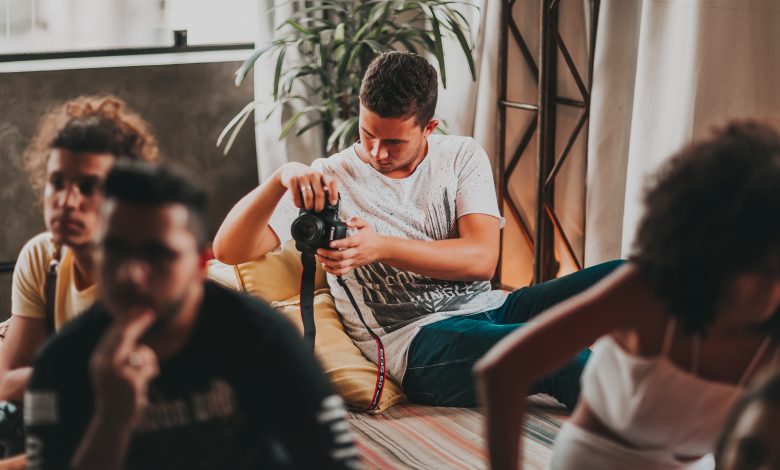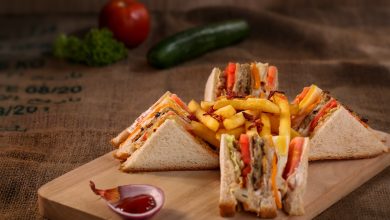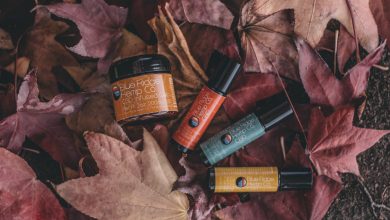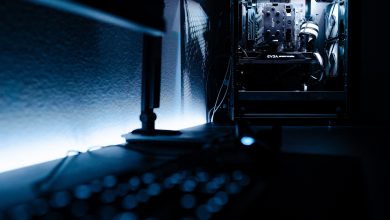How to Create a Low Budget Film: A Step-by-Step Guide

As filmmakers in the 21st century, we are already spoiled for choice. But even so, despite all the resources, dirty films are still being made.
You generally see it’s not about the camera you’re taking. To make the most of the reduced budget, you have to consider the entire filmmaking process.
This article will detail the filmmaking process for a low-budget movie.
let’s start..
Section 1: What is a low budget film?
How long is it?
This should be one of the first questions you ask yourself when you’re planning to make a low budget film. In our experience, you’ll get the best results if you start with a script that’s short enough to be written on a couple of A4 pieces of paper. I’ve learnt it the hard way (with films I didn’t even finish), and the movie I did shoot has many continuity errors.
The answer is somewhere between two weeks and four weeks, but we’ve found that a real minimum is the duration of around three months. It doesn’t sound like much, but the shooting of a feature can cost $150-$200 per day, and after four months of that, you’re left with a movie that is around one hour long.
Consider the whole filmmaking process
Before you commit to writing a movie, start looking at it as a film. And remember, a film is not just an edited film. It’s also a story.
So think like a writer, for instance.
Know your budget
The first thing you have to do is to set your budget.
Ideally, you want to hire a producer and a director who will have a strong working relationship with you.
You also have to consider whether the project is a feature film or a short film. A feature length film will require more money and preparation.
Be sure to consider the length of your movie. While a short film might not need a large production budget, it will need less money to make it great.
Set a shooting schedule
Next, you need to decide on the shooting schedule.
Depending on your budget, the best shooting schedule will depend on the length of the movie. But even if you have a small budget, a shorter shooting schedule may work.
The average film takes anywhere from 6 to 8 weeks.
Choose a camera
The first thing to do is to choose your movie camera.
Let’s be honest: people will expect your movie to be low budget because you’re filming on a cellphone or using an iPod Touch. So you have to make a good choice.
If you’re planning on shooting on a cell phone, you should really consider using a good iPhone or Samsung Galaxy. You don’t want to shoot a movie on a 2-megapixel phone, so get a good quality phone.
The best camera for a low budget is a GoPro HD Hero 3. They cost about $230. It’s a rugged and easy-to-use camera for all situations. You can get it in many variants, including the aforementioned Hero 3 Black.
Why is it the best?
It is a portable device, and you can get it in many variants, including the aforementioned Hero 3 Black.
Camera setup
The first thing that is essential to take into consideration is your camera setup. When you see a shoot with multiple cameras, your first reaction is “how much is this going to cost?”. Well, believe it or not, that’s how much it costs to shoot a movie with multiple cameras. For example, you will have at least 2 main cameras, with an additional zoom lens for some sequences, for example. You will also need a “stationary” camera (I always used to shoot my movies on a DV camera, which cost me about $1,000, and it’s fully functional) and a professional audio recording studio.
You can easily get this setup for $50,000 to $150,000 depending on the set-up, extras, special effects, etc. If you are in need of a recording studio, I would recommend you hire one in Los Angeles.
The camera’s position
A challenging aspect of low budget filmmaking is, unless you’re already blessed with a quality camera, you have to use a cheap camera for your low budget movie.
The real problem here is, all these cheap cameras are way too small. A budget movie needs a bigger set of lenses.
So for the first two weeks you should invest in shooting for a real camera.
In order to find out which camera would work best for your movie, you will need to think about these things:
What is your concept
What kind of genre of film are you shooting?
What is the purpose of your movie
Are you going for:
Documentary style:
For short documentaries, a digital SLR like the Canon 5D or Nikon D5000 is good.
For a longer feature, you can rent a camera, but renting a professional lens will be expensive.
The camera lens
Camera lenses are one of the few parts of your filmmaking equipment that doesn’t get cheap very fast.
It takes a lot of research and skill to build and make good quality equipment, so for low budget films we recommend going to the professionals.
If you’re going to film a festival, make sure you send the pros your test reel.
Start off by scouting for the best camera you can afford. Then get the best tools to use with the camera. If you’re looking for film cameras then you should know that the smaller cameras are going to cost more but produce higher quality film. A D35, D800 or a stills camera, will produce some of the best films ever made.
A good movie camera starts off at about 20,000.
The type of lens
You have to decide which type of camera you’ll need for your movie.
You want to use a mirrorless system or a DSLR, right? And of course, you want to have a fast lens. So which one do you use?
Well, there’s a big difference between the two. The mirrorless system allows you to mirror your image, meaning that you can look through the viewfinder to check and correct the shot.
However, in order to take pictures you have to rely on autofocus. And even if you do, you can’t focus on objects that are closer than your eyes. This means that you’ll need a very fast lens to get the best results.
I recommend picking up a macro lens. I personally own the Canon 24-105mm f/4L IS USM.
The necessary lights
As stated, there are limited resources so you need to get the most out of what you have.
Choose the right angles and shots for your story
We’ve all seen something so amazing with a tripod in the background. That’s what you want to keep in mind. For those scenes that require extensive set-up, make sure that the tripod doesn’t take up any of the frame.
You can fix that easily by following the Rule of Thirds. Choose the right angles and shots for your story. And that way, you can achieve an impressive amount of efficiency on a low budget.
A classic example is ‘Saw’. One of the best examples in the low budget field. All these items in the movie cost less than $250.
Reality versus Science
Yes, the movies’ central character is one of the scariest things you’ll see.
This is due to:
The director’s ability to show something unnatural in a realistic manner
The amount of time he’s able to spend on each scene.
A low-angle shot can make things more dramatic…
Take a low-angle shot
Low angles make everything look more dramatic, especially when you are trying to tell a story. In some movies, you will see a lot of these shots from afar, but in most of them, you will see the characters looking at something in the distance, or a movement in the background.
While these shots can also be used in the middle of action, these long-shots will be used to show the emotions of the characters.
The ball bouncing in front of a building is a good example of a low angle shot.
A wide shot
Speaking of angles, wide shots are generally longer shots. A wide shot is just what it sounds like. A wide shot will take up the entire frame and usually leave the rest of the background out of the frame. A shot of the sky is a good example of a wide shot.
…or use a high-angle shot to show power or authority
2. Who am I making this film for?
Think about who your target audience is. Is it a specific client, a particular situation, or a set of audiences?
There are two ways to decide:
Location
Location is probably the most important consideration for budget. If you don’t have a location, you can probably buy a location and get the shots you need from there. If you do have a location, get some keys and a description of the shot you want to make. Find out about how much is allowed on each shot – usually you can build some extras into your budget and allow for spending a little more on your shots. For example, if you’re creating a handheld shot in a different country to the final destination, you can add in baggage fees, extra travel time and such.




